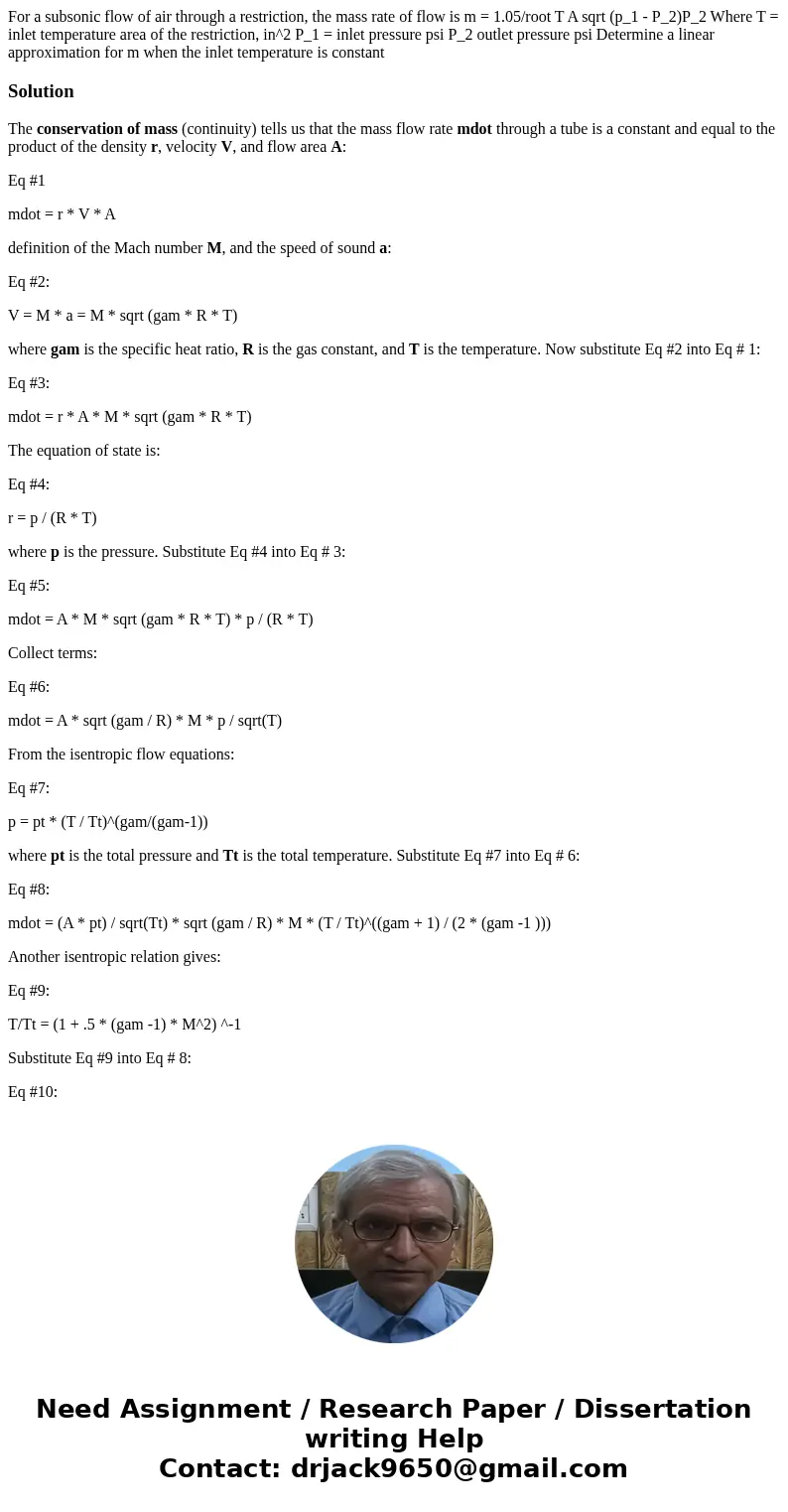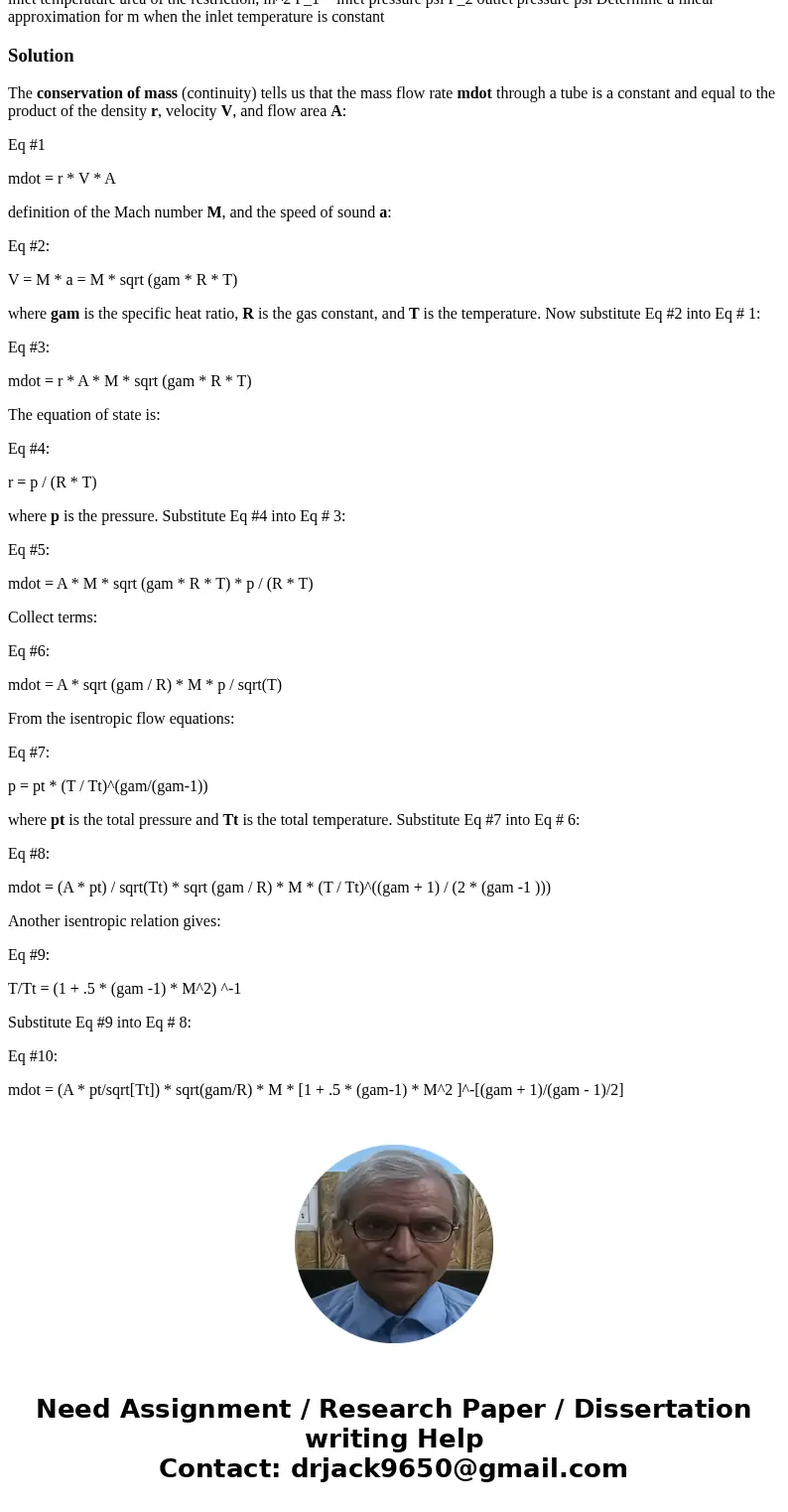For a subsonic flow of air through a restriction the mass ra
Solution
The conservation of mass (continuity) tells us that the mass flow rate mdot through a tube is a constant and equal to the product of the density r, velocity V, and flow area A:
Eq #1
mdot = r * V * A
definition of the Mach number M, and the speed of sound a:
Eq #2:
V = M * a = M * sqrt (gam * R * T)
where gam is the specific heat ratio, R is the gas constant, and T is the temperature. Now substitute Eq #2 into Eq # 1:
Eq #3:
mdot = r * A * M * sqrt (gam * R * T)
The equation of state is:
Eq #4:
r = p / (R * T)
where p is the pressure. Substitute Eq #4 into Eq # 3:
Eq #5:
mdot = A * M * sqrt (gam * R * T) * p / (R * T)
Collect terms:
Eq #6:
mdot = A * sqrt (gam / R) * M * p / sqrt(T)
From the isentropic flow equations:
Eq #7:
p = pt * (T / Tt)^(gam/(gam-1))
where pt is the total pressure and Tt is the total temperature. Substitute Eq #7 into Eq # 6:
Eq #8:
mdot = (A * pt) / sqrt(Tt) * sqrt (gam / R) * M * (T / Tt)^((gam + 1) / (2 * (gam -1 )))
Another isentropic relation gives:
Eq #9:
T/Tt = (1 + .5 * (gam -1) * M^2) ^-1
Substitute Eq #9 into Eq # 8:
Eq #10:
mdot = (A * pt/sqrt[Tt]) * sqrt(gam/R) * M * [1 + .5 * (gam-1) * M^2 ]^-[(gam + 1)/(gam - 1)/2]


 Homework Sourse
Homework Sourse